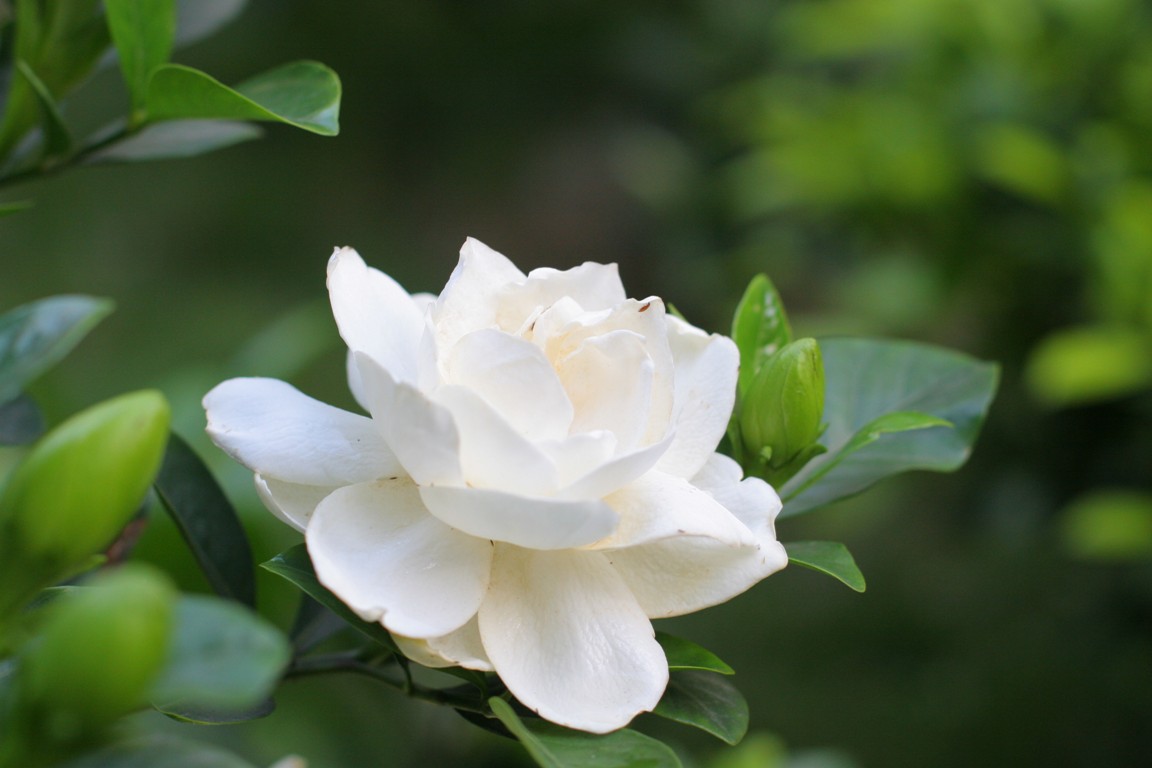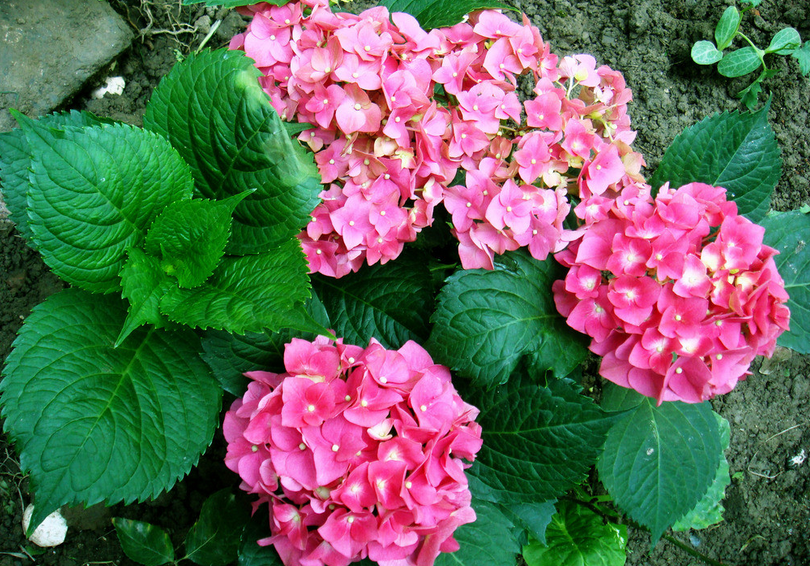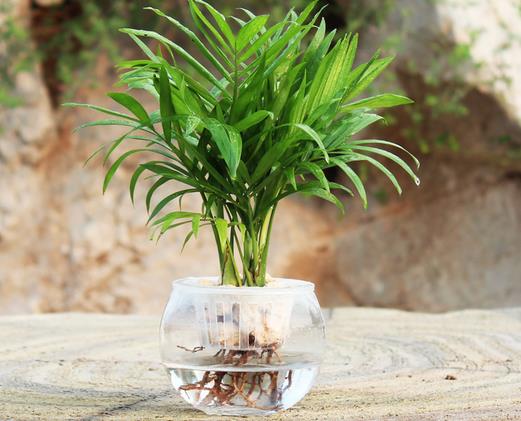What if the leaves of gardenia turn yellow?
Gardenia likes a warm, moist semi-shady environment, slightly shady, afraid of strong light exposure, suitable for summer in a cool place or in the shade of flowers, etc., with scattered light to maintain. Gardenia, also known as Gardenia jasminoides, yellow gardenia, is an evergreen shrub of Rubiaceae, Rubiaceae and Gardenia, native to China. Like warm, humid and sunny environment, more cold-resistant, resistant to semi-shade, afraid of stagnant water, requires loose, fertile and acidic sandy loam. It belongs to Rubiaceae and Gardenia. Evergreen shrubs. Branchlets green, leaves opposite, leathery long oval, glossy. Flowers axillary, shortly pedicellate, fleshy. The fruit is ovate to long elliptic, with 9 winglike straight ribs, 1-loculed; there are many seeds embedded in the fleshy placenta. It blossoms from May to July, with beautiful flowers, leaves and fruits, and fragrant flowers. Roots, leaves and fruits can be used as medicine, which has the effect of purging fire and removing annoyance, clearing heat and diuresis, cooling blood and detoxification. The following editor will introduce the reason why the leaves of gardenia turn yellow.

What if the leaves of gardenia turn yellow?
Slowly adapt to the environment. If the gardenia just bought from the market, suddenly changed from the greenhouse to the new environment, need to slowly adapt to the new environment, of course, the early adaptation due to different temperature, moisture, may cause leaves yellowing. Therefore, first observe for a period of time, during which pay attention to good maintenance.
Water more. Gardenia likes water, and it is easier to grow in the south. However, due to the dryness and lack of humidity in the north, the leaves will be withered and yellow. Therefore, it is best to put gardenia in a large tray, the tray is covered with water, at the same time, pay attention to sprinkling water to the leaves every day, so that the leaves are fully moist.
Acidic water is more suitable. When watering gardenia, there are places that should be paid attention to. Gardenia likes acidic water, like alkaline water in the north, which can easily cause leaves to yellow. therefore, we should pay attention to correct watering.
Open the window for ventilation. Gardenia growing environment, need to be ventilated and moist, bright light. If you often do not open the window, there will also be signs of yellowing on the edge of the leaf, so remember to open the window every day for ventilation.
adequate manuring. Gardenia needs to be fertilized in the process of conservation, but attention should be paid to avoid excessive concentration when fertilizing, otherwise it will also lead to excessive nutrition and yellowing of leaves, so it is necessary to irrigate with clean water and dilute the soil.
The editor likes gardenia very much. I remember the first time my mother brought me one. I smelled it and liked it very much. I hope you can find the skill of growing gardenia.
What about gardenia leaves yellowing? what about gardenia leaves yellowing?
Causes of yellow leaves of Gardenia jasminoides
Improper moisture
Gardenia should not be watered too much in the process of planting. Stagnant water or wet soil in the basin will cause the young leaves to be dim, grow slowly, and the old leaves show yellowish green and wither gradually.
Improper lighting
Too much light or too much light will cause the leaves of the plant to turn yellow. If the strong light is direct for a long time, there will be macula on the leaf surface, but if it is placed in a shady environment for a long time, the leaf will fall off because it does not get enough sunlight, so it is necessary to replenish the light in time.
Improper fertilization
In the process of gardenia planting, fertilization concentration will cause plant yellowing, the tip of new leaves will be yellowish brown, the leaves will be uneven and glossy, and the old leaves will wither and fall off gradually. At this time, you need to replenish the fertilizer in time, but before that, you need to judge which fertilizer should be added according to the performance of the plant, as follows:
Nitrogen deficiency: plant nitrogen deficiency simple leaves yellowing, new leaves small and brittle.
Potassium deficiency: when plants lack potassium, the old leaves change from green to brown.
Iron deficiency: at the beginning, the leaves are yellowish or white, the veins are still green, and in severe cases, the veins are also yellow or white, and finally the leaves dry up and die.
Magnesium deficiency: yellowing gradually develops from old leaves to new leaves, and the veins are still green. When the leaves are serious, the leaves fall off and die. ⑤ phosphorus deficiency: the old leaves were purplish red or dark red.
The temperature is too low
Gardenia jasminoides can tolerate low temperature, but too low temperature will cause leaf yellowing. In the process of gardenia maintenance, it is easy to frostbite in winter, and it is easy to frostbite plants if warm measures are not taken in early spring and early winter night.
Yellowing treatment of Gardenia jasminoides leaves
Slowly adapt to the environment
Most of the gardenia just bought back from the market are taken out from the greenhouse, and it takes a period of adaptation to change to the new environment. If the environmental difference is too large, it will cause yellow leaves, which is out of control at this time. Therefore, the leaves yellowing first observe for a period of time, during this period of good maintenance.
More watering
Gardenia likes water, warm south wind and humid environment, but in the north, dry weather and insufficient air humidity will cause the leaves of the plant to turn yellow. Whether in the south or north, the best way is to put the plant in a large tray, fill the tray with water, and pay attention to sprinkling water on the leaves every day, so that the leaves absorb water, full and shiny.
Acidic water is more suitable.
Gardenia likes acidic soil, and the tap water is alkaline or neutral, so some acidic substances are often added when watering, such as edible vinegar and citric acid.
Window ventilation
Indoor maintenance of gardenia needs regular ventilation to ensure that the environment is bright, put the plant on the window for maintenance.
adequate manuring
The various manifestations of fertilizer deficiency of Gardenia jasminoides are introduced above, and fertilizers are properly supplemented according to the growth status of the plant to ensure the balance of each nutrient. If you fertilize too much, immediately water and rinse, or turn the basin to change the soil.
Prune yellow leaves
Gardenia woody stem, when there are yellow leaves, directly cut off the yellowed branches, can ensure the normal growth of the trunk, careful maintenance, soon, grow new leaves.
Gardenia leaves yellow how to do gardenia leaves yellow dry how to do?
Gardenia is native to China and is cultivated in most parts of the country, concentrated in East China, southwest and south-central China. Gardenia likes moist air and adequate light and well-ventilated growth environment, summer should avoid direct sunlight, suitable to live in a slightly shaded place, resistant to semi-shaded water is more cold-resistant, the most suitable growth temperature is about 16 degrees, the winter temperature should not be lower than 0 degrees, too low will be dormant in the northeast, North China, Northwest can only be used as greenhouse potted flowers. It is suitable to be planted in light clayey acidic soil with loose and fertile soil and good drainage. It is a typical acidic flower.
Edible and medicinal, Compendium of Materia Medica called it "Yue color,"Qianjin wing" facial cream. " Southern Yunnan Materia Medica called it "purging lung fire, stopping lung heat and coughing, stopping epistaxis and eliminating phlegm."
The leaves of Gardenia jasminoides often turn yellow in the process of growth. Too much water, too little sunlight, too much fertilizer and too little cultivation and management disorders will cause leaf yellowing, but the yellowing situation is different, so we should carefully observe and analyze the causes and correct them.
The yellowing of gardenia can be divided into the following situations:
The tender leaves are dark yellow and dull, the old leaves have no obvious change, the branches are small and yellow-green, and the new shoots are not long, indicating that they are overwatered. Remove the flowers from the pot and place them in a ventilated, cool, self-drying soil mass and then put them back into the basin.
The dry yellow is different from the water-deficient yellow, the water-deficient yellow is withered and dry at the tip or edge of the leaf, and the old leaves wither and fall off from the bottom up, but the growth of the new leaves is relatively normal. Pay attention to watering enough and thoroughly.
The burning yellow and strong sunlight shines directly on some shade-loving flowers (such as hanging orchids, hairpins, etc.), which is easy to cause the withering of the leaf tips and edges, and the macula appears in the sunny part of the leaves. Just move to the shade. Lack of light and yellow for a long time in a shady environment, the leaves can not get enough sunlight, can not form chlorophyll, the whole leaves turn yellow and then fall off, supplementary light can avoid the disease.
The yellowing of flowers caused by excessive fertilization or excessive concentration is shown in the dry brown at the top of the new leaves, the leaves are generally thick and without luster, and the concave and convex are not stretched, and the old leaves are scorched yellow. Fertilizer should be stopped immediately and some fertilizers should be washed with a large amount of washing.
The lack of fat yellow shows that the color of the young leaves becomes lighter, showing yellow or light green, while the old leaves are more normal or gradually change from green to yellow. Check the basin soil, if there is a dry knot phenomenon should change the soil, usually apply thin fertilizer frequently and timely pour some alum water.
Summer and autumn to prevent the hot sun exposure, lest the leaves withered, affecting the ornamental.
Apply thin fertilizer once every 10-15 days in April, and you can't water too much with buds. Don't pour too much water when you have a bud, or it will cause a bud drop. It is necessary to apply phosphorus and potassium fertilizer and thinning buds to prevent falling buds. This kind of flower needs scattered light, good acid and fertilizer, this flower is afraid of waterlogging, the edge of the leaf blackens when it is waterlogged. Usually, when you see the soil dry, you use your hand to flick the earthen pot (like a watermelon). When you hear the empty sound of Dangdang, you water it until it leaks underneath. The flower was watered with tap water from the previous day and kept for a day and a night. The water is mixed with some rotten upper layer fat water mixed with rice panning water, lemon peel, broken bones, eggs, soybean milk, etc., which is a little smelly, but it will dissipate after a while, or the rice panning water will turn sour after a few days and pour it on the roots.
If the leaves of gardenia are dry, but not yet dry, soak the whole pot of gardenia in water for one day (the method of first aid for gardenia drought), then take it out and put it in a ventilated and cool environment with plenty of scattered light, do not bask in the sun, it will sprout again in about ten days.
Do you know the flower language of gardenia-eternal love and agreement, life waiting and joy.
Gardenia bloom ah, a touch of youth pure love, I hope your love and gardenia bloom in the same season, do not compete for beauty only in their own season.
- Prev

Culture methods and matters needing attention of Hydrangea
Hydrangea is a common courtyard flower, its umbrella-shaped flower is like a snowball, surrounded by oval green leaves, very beautiful. Let's remind you that when you cultivate hydrangea, you must first master some relevant knowledge. let's learn more about it with the editor.
- Next

What are the advantages of hydrophytes? What are the two main types of aquatic plants?
What are the advantages of hydrophytes? First, because water can evaporate freely, in the same environment, plants grown in pots have a more obvious role in regulating air humidity than plants grown in pots. Second, water plants can omit the management of pot soil, clean and sanitary, simple maintenance. third
Related
- Fuxing push coffee new agricultural production and marketing class: lack of small-scale processing plants
- Jujube rice field leisure farm deep ploughing Yilan for five years to create a space for organic food and play
- Nongyu Farm-A trial of organic papaya for brave women with advanced technology
- Four points for attention in the prevention and control of diseases and insect pests of edible fungi
- How to add nutrient solution to Edible Fungi
- Is there any good way to control edible fungus mites?
- Open Inoculation Technology of Edible Fungi
- Is there any clever way to use fertilizer for edible fungus in winter?
- What agents are used to kill the pathogens of edible fungi in the mushroom shed?
- Rapid drying of Edible Fungi

